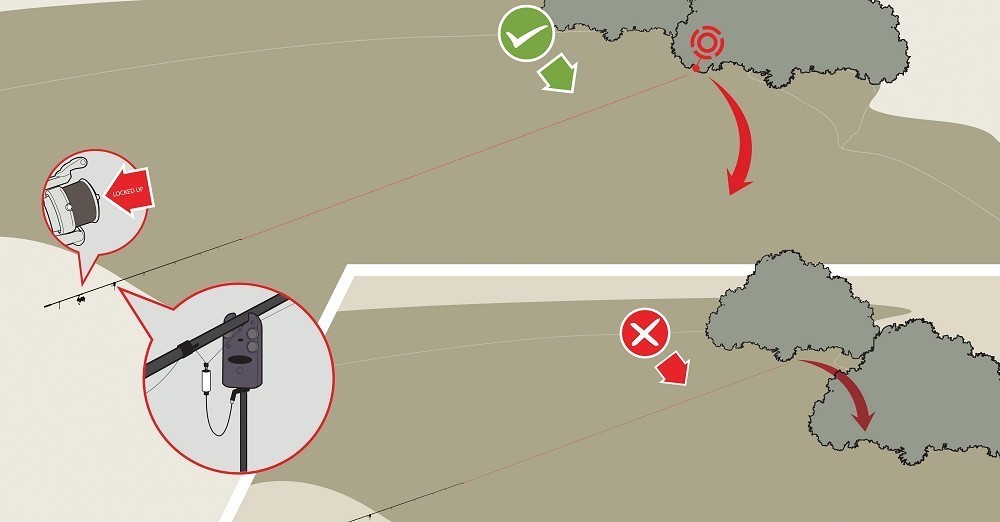
How to fish up against snags for outstanding results
Fish them right and you can have some outstanding results
With hard fished lakes, the fish are often swimming around trying to get away from the pressure that angling brings. There aren’t many locations where they can relax with the peace of mind they are safe, but one such place they can and do visit on a frequent basis where they can’t be touched is sets of snags.
Snags can take many forms but they are often overhanging trees with branches that are submerged under the water’s surface. Anglers are unable to present a bait inside these safe-havens so they are often found sat inside these for long periods of time. Your best chance when they are hidden away amongst snags is to cast up tight against them, this means when they enter or exit them they will come across your bait.
There is a specific way to fish against snags because if fished incorrectly, the carp will be able to gain entry back into the snags and this causes a danger to them if you get a break in the line. If fished correctly, the carp will not be able to regain refuge in the snags and you could bag up big time. Here’s how...
Nice and strong
First of all you need a strong and abrasion resistant monofilament main line. This means if the line brushes against any branches it has a lesser chance of breaking. We recommend 18lb Gardner HydroTUFF.
Tighten up
Once you have cast against the snag, place your rod on the rest and tighten up to the lead but be careful not to move the presentation.
Slight drop
Setting your indicator incorrectly delays how quickly a take is registered at the rod. The hanger/swinger should be fished on a drop of just a couple of inches with the buzzer set on its most sensitive. This allows several bleeps as the line pulls the indicator tight up to the blank but doesn’t allow the carp any additional movement before hitting a solid wall of resistance and being forced to kite.
No give
Screw your clutch up as tight as possible so no line can be given when you have a take. If you’re using a free-spool system (i.e. a Baitrunner) flick this facility off so no line can be taken.
On it
Be on top of your rod at all times so you can get on it in a split second, this gives the carp less chance gaining sanctuary in the snags.
Walk back
When striking a fish, walk backwards immediately to take the stretch out of the line. If you are using mono it has stretch so if you don’t walk back the carp can use the stretch to get back into the snags.
Line angles
When locked up against snags the fish can’t take any line off your reel to gain sanctuary in the snags but they can kite left or right on a tight line and this will cause you problems if your swim choice is not correct.
If you fish directly to the left-hand side of a snag tree it still allows the fish to kite to the right which will allow the carp to gain sanctuary in the branches, which will result in a lost fish. If you set up further around the bank and fish at a different angle, the carp can’t gain entry in the snags by kiting or taking line.



